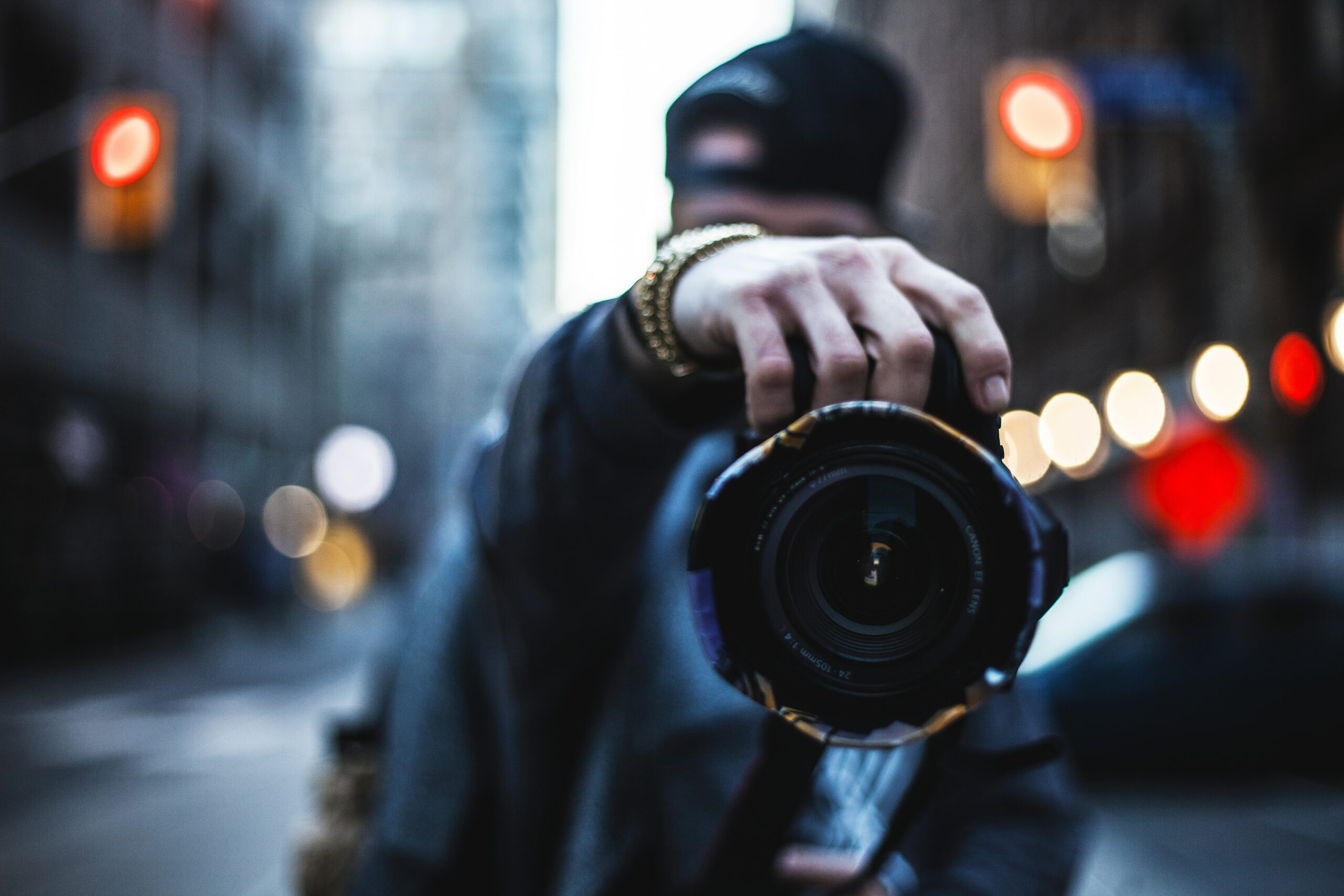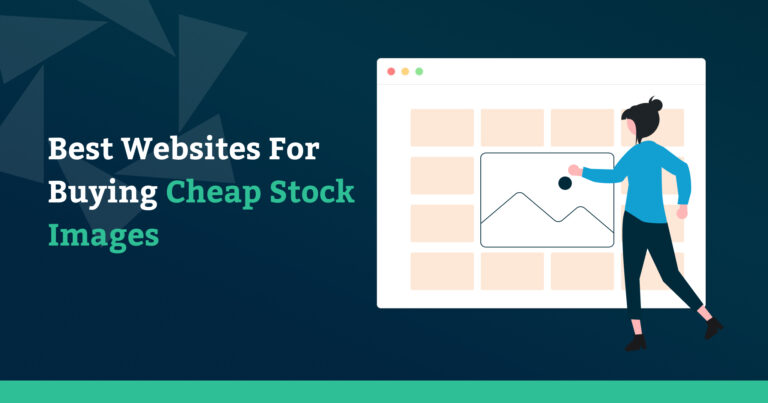Whether you’re a professional photographer, a hobbyist, or just beginning your career, when it comes to selling your images, an industry-changing option has leveled the playing field. Although the stock photography industry started in the 1920s, the 21st century ushered in an entirely new way for people and businesses to find the photos they needed — and for photographers to reach an enormous market of potential buyers.
In this guide, you’ll learn all about stock photography: what it is, its potential benefits and challenges for stock photographers, and tips for taking photos that sell. But don’t think of selling stock photography as simply a way to offload the hundreds of unused images on your hard drive. To be successful will require a bit of effort.

What is stock photography?
You can define stock photography as photographs people create without a specific end-user or project in mind.
As a photographer, you (or, in some instances, your employer) own the copyrights to every photo you take. When you press the shutter, an image you capture cannot be printed, sold, altered, publicly displayed, or distributed without your permission.
By its simplest definition, stock photography is an industry in which a photographer permits another person or business to use a copyrighted image. Permission to use a photo, including specifics of how, when, and where it can be used, is granted through various licensing models. A third-party agency manages the sale of stock photography licenses.
Stock photography is much faster and less expensive for a company to purchase than if they were to hire a photographer for a custom photoshoot, and it’s also a way for photographers to earn extra income by selling their work.
What are the different styles of stock photography?
- Commercial: Used in advertising, marketing, promotional materials, product packaging, or to promote a business, you’ll most often see stock photography in magazine or billboard ads.
- Editorial: Not for commercial use. Journalists, newspapers, or other media outlets use editorial stock photos for educational or editorial purposes. Examples include celebrity photos or images of current events.
This guide will focus on commercial stock photography because, as a photographer, you’ll have a higher potential to make sales. This style of stock photography has specific requirements you’ll need to know about, like model and property releases.
But to understand how stock photography became a massive industry today, look at where it all started.
History of stock photography
Newspapers and magazines began using photographs in the 1880s with the invention of halftone printing. Over the next 40 years, publications hired staff photographers and freelancers to provide the needed images. Sometimes, the photos were too challenging to come by, so reenactments were staged and photographed, often at great expense to the publication.
In 1920, H. Armstrong Roberts photographed a group of people standing before a tri-motor airplane. Roberts pioneered the creation of stock photography when he asked all six people to sign model releases. With those releases, he could sell the rights-managed images to multiple publications, earning a profit and saving publications the expense of hiring photographers or staging reenactments.
Roberts created one of the first stock photography libraries on the success of that first stock image, filling it with generic ideas that publishers and advertisers could broadly use.
The launch of photo archiving
By the 1940s, several stock photo agencies licensed hundreds of thousands of photographs. It became clear that a system was needed to organize all the images. British magazine publisher Sir Edward Hulton commissioned a historian to archive his magazine’s vast photo library, organizing them using keywords and classifications to be found again when needed easily.

In the 1990s, stock photo agencies began digitally archiving their available images on servers, relying heavily on Hulton’s earlier development of using keywords to organize pictures efficiently.
Photodisc’s stock photo agency began selling images as small, themed collections. The “image packs” were sold on CDs under a royalty-free license. Unlike the rights-managed license, which only allows the licensee to use the image one time, the owner of the disk could use and reuse the images without paying additional fees. Eventually, Photodisc began selling images online and became known as Getty Images.
How stock photography became a multi-billion dollar industry
In 2001, iStock launched the first online, subscription-based stock photography agency. Getty Images later purchased the company, one of today’s largest, most successful stock photo agencies.
Alongside Getty, companies including Shutterstock, Adobe Stock, Alamy, and hundreds of others provide photographers with a way to expand their audience and sell their images. More than 350 billion stock images are available today, generating nearly $4 billion in revenue annually.
On May 17, 2019, Canva, an internet-based platform for design and publishing, completed the acquisition of Pexels and Pixabay. Pexels and Pixabay are renowned as two of the most significant websites providing free stock photos globally. Through this acquisition, Canva gained access to extensive libraries consisting of over 1 million free stock photos, vectors, and illustrations from Pexels and Pixabay. Canva users could then utilize these resources to enhance their design projects.
On March 30, 2021, Getty Images, a prominent visual content provider, expanded its reach by acquiring Unsplash, a well-known website offering free stock photos. Through this acquisition, Getty Images gained entry to Unsplash’s vast library, which housed an impressive collection of over 100 million high-quality, freely available images. Consequently, Getty Images’ customers were granted access to a broader selection of images, enriching their creative projects with diverse visual resources.
Types of stock photography
Stock photography can be divided into macrostock, midstock, and microstock.
- Macrostock photography, or traditional stock photography, is often used by businesses that want exclusive licensing rights to an image. Well-known photographers usually provide these images; the usage licenses sell for hundreds or thousands of dollars each.
- Midstock photography is lower-priced than macrostock but still offers some exclusivity to the purchaser. These images are most commonly used online.
- Microstock photographs are low-cost, usually ranging from a few cents to a few dollars to license. These licenses are sold online through single-purchase or subscription-based stock photography sites. Microstock photos make up, by far, the vast majority of all stock images licensed and used.

The nature of microstock photography makes it the ideal starting point for photographers hoping to sell their images.
Benefits of selling stock photos
Selling stock images can be exciting for photographers looking to expand their audience and build a strong and vast portfolio. With focused effort, many stock photographers earn several hundred dollars monthly in passive income. And, as the photographer and copyright holder, you have full and complete control over what, when, and where you shoot.
Despite the many benefits, stock photographers face many challenges when selling their images.
Challenges of selling stock photos
Consider that more than 350 million stock photos are available to license today, with about a million more added annually. For the photographer, this means the market is very saturated and highly competitive.
To succeed, your photographs must follow ever-changing trends and stand out against those that depict similar imagery.
You’ll also need to play a bit of a numbers game. The more photos you make available for purchase, the more likely people will stumble upon your work faster.
You’ll need to plan your photoshoots to make a full-time career out of selling stock photography. Make use of models or props, or even travel to in-demand destinations.
In other words, don’t expect to upload the hundreds of unused photos on your hard drive and expect to rake in the dough.

Tips for creating stock photos that sell
Stock images can technically be photographs of just about anything in any style. Still, the most successful stock photographers follow some guidelines for shooting and marketing their images. The following tips will steer your stock photography career toward success.
1. Keep up with trends
Several photo subjects will always be top sellers. Landscape photography, lifestyle photography, food, business/industry, and holiday-themed photography are most commonly in demand.
But your images should reflect changing trends, too.
Consider current events when shooting stock photos. When the COVID-19 pandemic changed daily life around the globe, those stock photographers whose images conveyed the changing trends and human values earned much more than those who didn’t. Stock photos of large crowds and busy restaurants were abandoned in favor of masked faces and home-cooked meals. Photos of crowded commutes and bustling offices were replaced with images of home offices and Zoom meetings.
As a stock photographer, you should also consider which social issues are trending. The last few years have seen a big push toward stock images that convey inclusion, sustainability, self-care, health, and nature. Reflecting on current events and trending social issues in your images will keep your images fresh and in high demand.
A trade show, a street parade, a food truck rally, or a craft fair. These are all great reasons to snap photos to sell for stock photography. Just avoid capturing specific brands or logos. This way, anyone shopping for an image can feel like it would work for them.

2. Know your rights and responsibilities
When photographing people or famous places, be aware of your rights as a photographer and your responsibilities as a seller. Legally, anyone can take photos of anything visible in or from a public space. But the moment you choose to sell your images, the rules change.
If the subject of your photograph is recognizable (this could be a person, place, object, landmark, building, or pet on public or private property), you will need the appropriate photo release form. One exception to this rule is if the image was publicly captured and considered newsworthy. In that case, you can sell the photo for editorial use only.
What is a model release?
A model release (or property release) is a contract that protects the photographer, the buyer, and the stock photography agency.
Having anyone shown in your photographs sign a model release (or property release if their personal property is shown) gives their consent for their likeness to be used commercially.
Without a signed release, you will have difficulty selling your images as stock photography. Make it a habit always to have a model release signed whenever you photograph people. If you do it from the start, you’ll never have to worry about it later.
Learn the copyright laws
It’s also important to familiarize yourself with copyright laws in your shooting area. Avoid selling images that include logos, famous buildings, works of art, or other subjects that may be protected under copyright laws.
For example, it’s perfectly legal in Paris to create stock photographs of the Eiffel Tower during the day. But, the moment the lights are turned on, it becomes illegal. This is due to copyright laws in France that allow an architect, painter, photographer, or other artists to retain the copyright of their work for 70 years following their death.
Under this law, copyrights have expired for the Eiffel Tower, built in 1887, but not for the lights, considered a form of artistic expression and installed in 1985.

3. Consider how your stock images will be used
People usually purchase stock images for the background of an advertisement, to represent a consumer group, to illustrate an idea, or to add visual interest to a blog post. People don’t usually purchase stock photos as art pieces or for photo albums. As such, your images should be simple and uncluttered. They shouldn’t include easily identifiable products or brands. They should have space to add text if necessary.
And, because they may be purchased for billboards or large-scale advertising, they should be shot in the highest resolution possible, using the lowest ISO possible.

4. Continually build your collection
If your goal is to generate income, you must continually add to your available collection of images. Stock photography websites often show the newest images first to keep content fresh and on-trend for customers.
If you allow several months to pass by without adding new images to your stock photography portfolio, your images may not appear on the first several pages of search results. If licensees have to scroll past a thousand images before they get to yours, you’re much less likely to make a sale.
As you shoot images to build your collection, take multiple shots of the same scene, too. Change your vantage point, focus on different parts of the composition, and take photos in both landscape and portrait mode. A potential buyer will often spot an almost-perfect image and look through your collection for additional shots that might be just right.

5. Become an expert at keywords
The quality of your image is essential to make a sale ultimately. But, the most perfect photo ever taken won’t attract a buyer if they can’t find it. When you add your images to a stock photography site, include keywords to help the buyer find you. You’ll want to use keywords that specifically describe what’s in the image. And use keywords that describe concepts or emotions that the image conveys.
Using the image below as an example, your listing should include keyword descriptions of the image’s subject: dog, Beagle, hound, dog park, young girl, teen, grass, dog training, happy dog, curly hair, countryside, etc. And it should include conceptual keywords: friendship, best friends, cute, adorable, casual, loyalty, love, etc.

6. Use quality gear
Historically, you could only be a commercial photographer if you used an expensive DSLR and a wide range of lenses.
And while it’s still primarily true that most photographers are using top-of-the-line gear, technology continues to improve. Many stock sites are now accepting photographs taken with mobile devices, too.
7. Think about the overall composition
Think about what kind of photographs companies might have difficulty finding a stock image for and filling that need for them. Do your own searches to see if you can find an area that’s lacking and try to fill the void.
The best stock photos don’t look posed or staged but are authentic, candid shots. Remember, if you take photos of people, always get them to sign a model release.
In terms of composition, always leave room for the buyer to add their logo or a line or two of text. Remember, companies use these photos for marketing or advertising. So they may choose another image over yours simply because it has room for their message.
Also, when a buyer is scrolling the stock photo sites looking for an image to purchase, they’ll see your image thumbnail first. This is your first chance to get their attention, so make sure it makes sense.
???? To be a professional photographer, you must know how to use your equipment to its full potential. Also, learning and testing different photography techniques will make a difference in time. We compiled a list of the best places on the internet to learn photography and become the pro you want in no time.
Where to sell stock photography
Getty Images, Shutterstock, iStock, and Adobe Stock are some of the most widely known stock photography agencies. These sites sell your images for you and take a percentage of the sales.
Each site differs in how they accept images to sell and what percentage they give per sale. So make sure to do your research and determine what is your best option.
When you’re just getting started, there are also free sites to gain exposure and feedback, like Unsplash and Pexels. Just be aware that other companies might use your images from these sites for advertising and make money from your free images.
So, if your photos are popular on the free sites, moving them to the sites that will pay you for their use is a good idea!
Final thoughts
As you’ve learned, becoming a successful stock photographer will require effort, planning, and excellent photography skills. Selling stock photos can be lucrative and rewarding for those willing to devote time and energy to providing potential buyers with the images they’re searching for.
Best of all, building and selling a stock photo collection allows you, the artist, to photograph exactly what you want, when, and how you want to.




